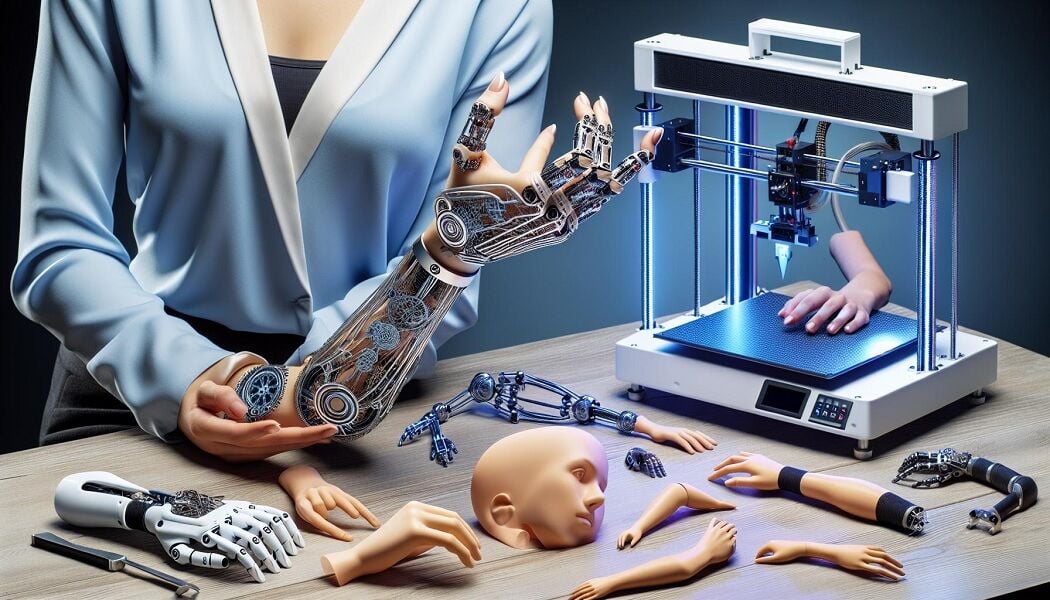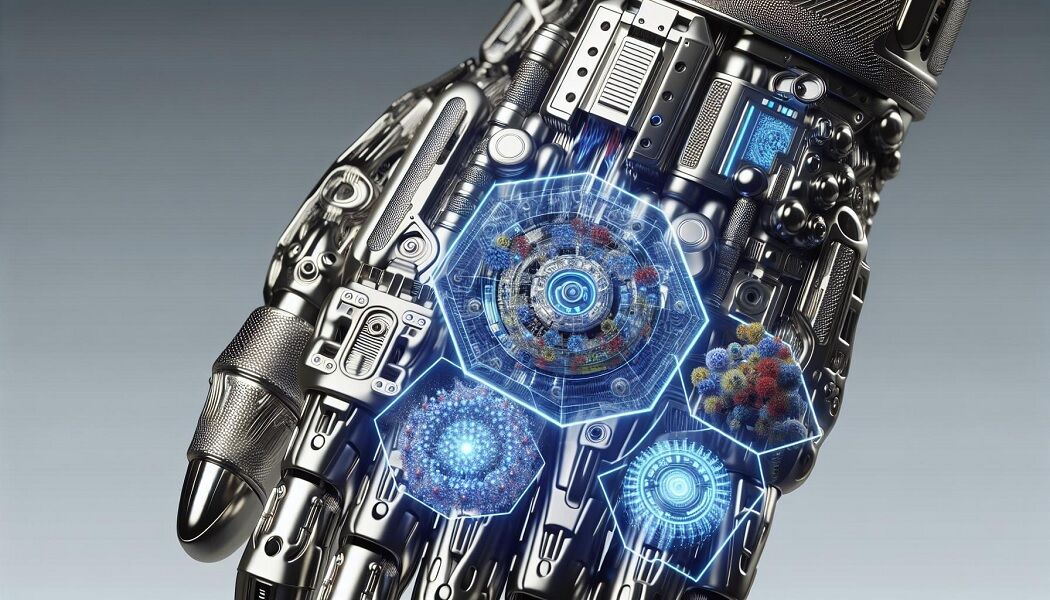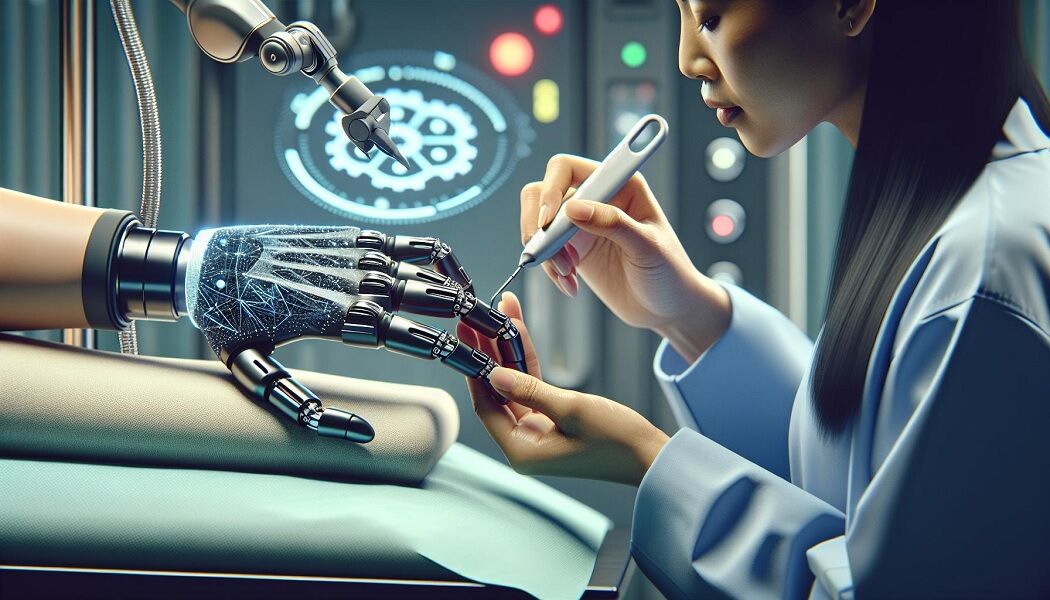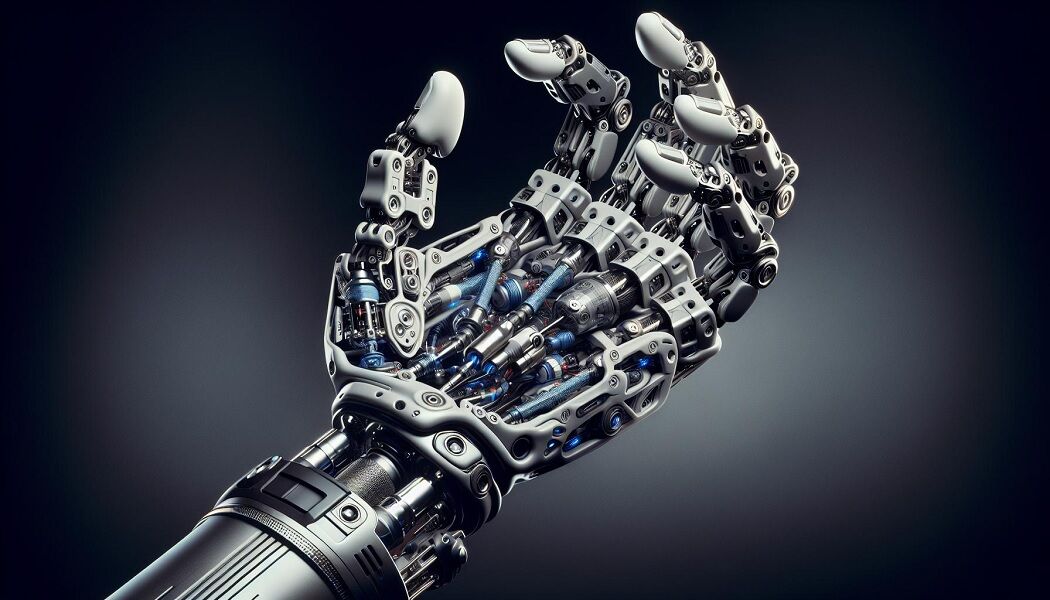Revolutionizing lives: The incredible evolution of prosthetic technology

The journey of prosthetic technology is an inspiring story filled with endless creativity and the unbeatable spirit of humanity. From simple tools in the old days to today’s advanced gadgets, prosthetics have truly changed countless lives for the better. Let’s take a stroll through history to see how these amazing aids have evolved.
Back in the beginning, prosthetics were pretty basic, made from whatever was handy like wood, metal, or leather. They were more about looking “normal” than actually working like real limbs. But boy, have things changed thanks to incredible advances in materials science and tech innovations.
Nowadays, we can create lifelike limbs out of silicone or PVC that are not just about looks; they work! Thanks to cool robotics and super-smart engineering, there are so many possibilities for people to move more easily and enjoy life more. It’s all a big high-five to human cleverness and never-give-up attitudes. We’re excited for you to dive into this fascinating story with us!
Early prosthetic devices
As the journey of prosthetic development unfolds, early prosthetic devices stand out as pioneering feats in the pursuit of enhancing human mobility and functionality. Their evolution reflects a fascinating blend of creativity, necessity, and the drive to improve quality of life.
Ancient prosthetics
The inception of prosthetics can be traced back to ancient times, marking humanity’s long-standing endeavour to compensate for the loss of limbs. The Capua Leg, dating back to 300 BC, is recognized as the world’s oldest prosthetic leg. Despite its eventual destruction in World War II, a replica in the London Science Museum attests to its historical significance. More intriguingly, the Eye of Horus story, dating around 3000 BC, signifies the earliest recorded mention of eye prosthetics in ancient Egypt. This period also saw early foot prosthetics, exemplified by the wooden toe found on a body from the New Kingdom of Egypt around 1000 BC. These artefacts underscore the ancient origins of prosthetic devices and their integration into human history.
Medieval innovations
The transition into the medieval era heralded a period characterized by gradual yet significant advancements in prosthetic technology. This epoch is noteworthy for the introduction of prosthetic hands that were crafted not solely for functional utility but also to emulate human anatomy with remarkable precision. Knights who had incurred limb losses during combat benefited from these innovations, as the prosthetics facilitated the wielding of weapons or the holding of shields, thereby demonstrating the exceptional skill prevalent in that era. Nonetheless, it is imperative to recognize that these devices were cumbersome and necessitated manipulation via the amputee’s remaining hand, highlighting both the limitations and opportunities for innovation at that time. This era served as a crucial phase for subsequent improvements in prosthetic technology, effectively acting as a conduit from elementary designs towards an endeavour for more efficacious and realistic substitutes.
An examination of these initial innovations indicates that the evolution of prosthetic development mirrors a persistent human ingenuity and a deepening comprehension of human necessities. Throughout centuries of advancement, the overriding objective has consistently been to enhance independence and quality of life for individuals experiencing limb loss.
Industrial revolution impact

The Industrial Revolution marked a pivotal moment in the advancement of prosthetic devices, fundamentally altering their development and accessibility.
Evolution of mechanical prosthetics
The onset of the Industrial Revolution marked a significant advancement in the field of prosthetics. Previously, mechanical prosthetics were rudimentary and predominantly bespoke. However, they began to experience enhancements with the introduction of innovative materials and manufacturing methodologies. The incorporation of metals such as iron and steel, alongside engineering advancements, resulted in prosthetic limbs that were both more durable and functional. These improvements significantly enhanced support and mobility for amputees, thereby substantially elevating their quality of life. A notable innovation during this period was the development of prosthetic hands equipped with movable fingers, facilitating a grip that closely emulated the movements of a natural hand.
Introduction of mass production
Mass production, a hallmark of the Industrial Revolution, played a crucial role in the evolution of prosthetics. For the first time, prosthetic limbs were produced in larger quantities, making them more accessible and affordable to the general population. This shift was particularly significant in the wake of wars, where the number of amputees increased dramatically. Mass-produced prosthetics, although not as personalised, provided a practical solution for many, ensuring that a larger number of injured individuals could regain mobility. The standardisation of components also meant repairs and replacements became easier, further enhancing the practicality of prosthetic use during this period.
The incorporation of assembly line methodologies not only optimized the production process but also fostered ongoing enhancements and innovations. Consequently, the prosthetic industry witnessed an accelerated evolution, paving the way for the advanced devices currently available. The sector transitioned from manufacturing basic mechanical limbs to developing prosthetics that more accurately replicate natural movements, thereby improving user comfort and functionality.
Modern technological advancements

The landscape of prosthetics has undergone significant transformation with the advent of modern technology. Innovations are enhancing both the functionality of prosthetic devices and their integration with human biology. This discussion will explore some of the most critical technological advancements shaping the future of prosthetics.
Integration of robotics
Robotic prosthetics signify a substantial advancement in the field of prosthetics. These devices utilize advanced robotics to provide users with unparalleled levels of functionality and control. At the heart of robotic prosthetics are sophisticated biosensors that detect signals from the user’s body—be it muscular or neural—and convert these into movements.
For instance, electrodes placed on the skin or implanted in muscles detect electrical activity, relaying this data to a microcontroller. This system processes feedback from both limb and actuator, enabling fine-tuned control over the prosthetic. Research highlights significant improvements in motor function for upper limb amputees, validating the impact of robotics in rehabilitation.
In recent years, the development of robotic hands with integrated forearms has seen remarkable progress. These devices afford amputees better grip strength, dexterity, and a more natural range of motion. Robotics in prosthetics isn’t just about replacing lost limbs; it’s about restoring independence and quality of life.
3D printing revolution
3D printing has instigated a profound transformation in the fabrication of prosthetic devices, heralding a bespoke manufacturing process that caters to the unique anatomical requisites and predilections of individual users. The principal advantages encompassed by 3D printing technology include its versatility, economic efficiency, and expedited production timelines.
Traditionally, the crafting of custom-made prosthetics has been characterized by significant financial burdens and extensive timeframes. In contrast, 3D printing facilitates the generation of personalized, functional, and economically viable prosthetic solutions. This technology spans from aesthetic enhancements to fully operative limbs, markedly influencing the sector. It presents a viable solution for those who might otherwise be excluded due to fiscal or logistical barriers.
Furthermore, 3D printing serves as an avenue for innovation within prosthetic design. Via initiatives that adopt open-source frameworks and foster global collaboration, endeavours are undertaken to transcend existing limitations, resulting in devices that are not only more efficacious but also increasingly accessible to those in dire need.
Ethical considerations in prosthetic design

User-centred design principles
In the realm of prosthetic design, the focus on you, the user, stands paramount. Crafting prosthetics isn’t just about technological advancement; it’s about understanding and addressing your specific needs, preferences, and lifestyle. User-centred design principles ensure that prosthetic devices enhance your quality of life without imposing undue burdens or discomfort. By involving you in the design process, manufacturers can create devices that are more than functional; they’re extensions of your body and identity. This approach encourages feedback loops, leading to continuous improvement and innovation. Crucially, it respects your autonomy and dignity, making sure that prosthetic solutions are as diverse as the individuals who use them.
Accessibility and affordability challenges
However, the journey to optimal prosthetic solutions faces significant hurdles, notably in accessibility and affordability. Despite technological leaps, a glaring gap remains in making these innovations widely available. High costs are prohibitive for many, leaving advanced prosthetic devices out of reach. It’s a stark reminder that progress, while commendable, must be measured by its accessibility to you and others in need. Efforts to democratise access through insurance coverage, subsidies, and scalable manufacturing are key to closing this gap.
In Thailand, the future of healthcare is being reshaped by the rapid advancement of telehealth services. This innovative approach leverages digital technology to provide medical care remotely, ensuring that patients across urban and rural areas have access to quality healthcare services. As Thailand embraces this digital transformation, telehealth is poised to significantly improve patient outcomes, reduce healthcare costs, and increase the efficiency of medical services nationwide, marking a new era in healthcare delivery.

































